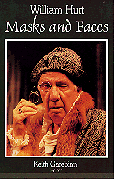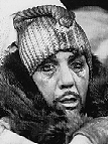


|
William Hutt: Masks and Faces.
Edited by Keith Garebian.
Grades 10 - 13 / Ages 14 - Adult.
|
excerpt:
This book is a tribute to William Hutt: it takes advantage of his seventy-fifth birthday to keep faith with his past, present, and future. There has been only one other book on Hutt -- my own biography, a theatre portrait that ended with achievements till 1988. So, there is ample need for an extension, for catching up with Hutt who could no more desert the theatre than the sun lose its place in the solar system. The pieces in this book are offered, therefore, as forms of further biography, with the implicit realization that the totality of William Hutt, the private man and the public performer, is still too great to be encompassed by individual accounts, however perceptive they might be.
This passage from the introduction to Masks and Faces establishes Garebian's position as Hutt's biographer, friend, and unabashed fan -- the ideal person to organize this festschrift for the actor.


The production revealed how the rigidity and haughtiness of an Apollonian idealism in morality, religion, and politics could break apart from the turbulent stirrings of a Dionysian force rooted in the libidinal subconscious.
Recommended for schools with active theatre programs.
Pat Bolger is a retired Teacher/Librarian living in Renfrew, Ontario.
To comment on this title or this review, send mail to cmeditor@mts.net
![]()
Copyright © 1996 the Manitoba Library Association.
Reproduction for personal use is permitted only if this copyright notice
is maintained. Any other reproduction is prohibited without
permission.
Published by
The Manitoba Library Association
ISSN 1201-9364
 Go back to CM Welcome page
Go back to CM Welcome page
 Go back to Table of Contents for this Issue
Go back to Table of Contents for this Issue